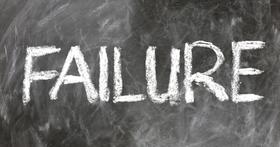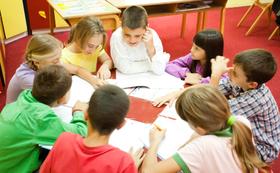Top Rankings
Random Lake School District ranks among the top 20% of public school district in Wisconsin for:
Category
Attribute
Graduation Rate
Highest graduation rate (Top 20%)
For the 2025-26 school year, there are 3 public schools serving 683 students in Random Lake School District. This district's average testing ranking is 6/10, which is in the top 50% of public schools in Wisconsin.
Public Schools in Random Lake School District have an average math proficiency score of 42% (versus the Wisconsin public school average of 40%), and reading proficiency score of 40% (versus the 38% statewide average).
Minority enrollment is 15% of the student body (majority Hispanic), which is less than the Wisconsin public school average of 34% (majority Hispanic and Black).
Overview
This School District
This State (WI)
# Schools
3 Schools
2,219 Schools
# Students
683 Students
813,947 Students
# Teachers
54 Teachers
58,944 Teachers
Student-Teacher Ratio
13:1
13:1
Student By Grade
District Rank
Random Lake School District, which is ranked within the top 50% of all 443 school districts in Wisconsin (based off of combined math and reading proficiency testing data) for the 2022-2023 school year.
The school district's graduation rate of 92% has increased from 90-94% over five school years.
Overall District Rank
#192 out of 447 school districts
(Top 50%)
(Top 50%)
Math Test Scores (% Proficient)
42%
40%
Reading/Language Arts Test Scores (% Proficient)
40%
38%
Science Test Scores (% Proficient)
50-54%
44%
Graduation Rate
92%
90%
Students by Ethnicity:
Diversity Score
0.26
0.53
% American Indian
n/a
1%
% Asian
1%
4%
% Hispanic
10%
14%
% Black
1%
9%
% White
85%
67%
% Hawaiian
n/a
n/a
% Two or more races
3%
5%
All Ethnic Groups
District Revenue and Spending
The revenue/student of $20,379 is higher than the state median of $17,039. The school district revenue/student has grown by 6% over four school years.
The school district's spending/student of $17,840 is higher than the state median of $17,011. The school district spending/student has grown by 6% over four school years.
Total Revenue
$14 MM
$13,869 MM
Spending
$12 MM
$13,846 MM
Revenue / Student
$20,379
$17,039
Spending / Student
$17,840
$17,011
Best Random Lake School District Public Schools (2025-26)
School
(Math and Reading Proficiency)
(Math and Reading Proficiency)
Location
Quick Facts
Rank: #11.
Random Lake Elementary School
(Math: 45-49% | Reading: 40-44%)
Rank:
Rank:
7/
Top 50%10
605 Random Lake Rd
Random Lake, WI 53075
(920) 994-4344
Random Lake, WI 53075
(920) 994-4344
Gr: PK-5 | 309 students Student-teacher ratio: 15:1 Minority enrollment: 20%
Rank: #22.
Random Lake High School
(Math: 30-39% | Reading: 45-49%)
Rank:
Rank:
6/
Top 50%10
605 Random Lake Rd
Random Lake, WI 53075
(920) 994-9193
Random Lake, WI 53075
(920) 994-9193
Gr: 9-12 | 219 students Student-teacher ratio: 12:1 Minority enrollment: 10%
Rank: #33.
Random Lake Middle School
(Math: 40-44% | Reading: 35-39%)
Rank:
Rank:
6/
Top 50%10
605 Random Lake Rd
Random Lake, WI 53075
(920) 994-2498
Random Lake, WI 53075
(920) 994-2498
Gr: 6-8 | 155 students Student-teacher ratio: 11:1 Minority enrollment: 11%
Frequently Asked Questions
How many schools belong to Random Lake School District?
Random Lake School District manages 3 public schools serving 683 students.
What is the rank of Random Lake School District?
Random Lake School District is ranked #190 out of 443 school districts in Wisconsin (top 50%) based off of combined math and reading proficiency testing data for the 2022-2023 school year. This district ranks in the top 20% of Wisconsin school districts for: Highest graduation rate (Top 20%)
What is the racial composition of students in Random Lake School District?
85% of Random Lake School District students are White, 10% of students are Hispanic, 3% of students are Two or more races, 1% of students are Asian, and 1% of students are Black.
What is the student/teacher ratio of Random Lake School District?
Random Lake School District has a student/teacher ratio of 13:1, which is lower than the Wisconsin state average of 14:1.
What is Random Lake School District's spending/student ratio?
The school district's spending/student of $17,840 is higher than the state median of $17,011. The school district spending/student has grown by 6% over four school years.
Recent Articles

School Vouchers: Updated Pros and Cons (2025 Review)
Comprehensive 2025 analysis of school vouchers, weighing benefits and challenges for families, funding, outcomes, and policy directions.

Benefits and Drawbacks of Homework in 2025
Explore updated 2025 insights on homework鈥檚 benefits, drawbacks, mental health impact, best practices, and policy trends in U.S. public schools.

Charter Schools vs Public Schools 2025: Key Differences & Trends
Explore updated 2025 insights comparing charter schools vs public schools, enrollment, academic outcomes, funding, and real-world examples for families and educators.





